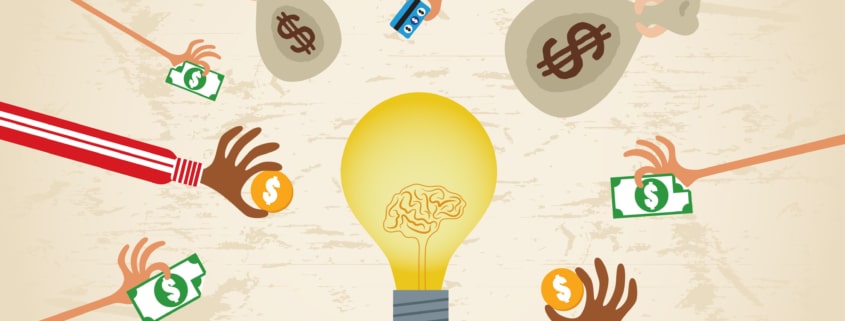It’s been noted time and time again: female entrepreneurs begin in the business world with a social impediment that their male counterparts don’t. But at the same time, today there are more female entrepreneurs than ever before. Women, however, are still statistically less likely to be approved for financing compared to men.
While there technically are no programs reserved specifically for supplying loans for female business owners, there are a number of resources available to women business owners to help them run and grow their businesses. Let’s discuss the state of women and the small business world on three levels:
- Why women are less likely to get approved for financing
- The top financing options available today, and how to better set yourself up for an approval
- Grants and other development programs created specifically for the benefit of women-owned businesses
Why Are Women Being Approved Less for Business Loans?
Despite the fact that women make up a growing percentage of today’s small business owners, there is still a large funding gap when you compare business financing secured by women with that secured by men. While there are many reasons for this gap, some of the largest are the result of being unable to meet the basic qualifications set forth by most lenders. Below are some of the primary reasons women have more difficulty securing business loans than men:
Industry: Every lender takes industry into account when reviewing a loan package. Why? Because some industries are inherently riskier than others. One of these risky industries is retail which tends to have higher expenses and lower profit margins. Many women-owned businesses are in the retail sector.
What can you do about this? Completely changing the industry of your business is likely not an option, but there are a few things you can do – regardless of the industry you’re in – to help improve your options for the future including:
- Figuring out ways to lower your business overhead
- Building a plan to increase your revenue
- Start by borrowing smaller amounts of money and ensuring that you pay them off on time
Time in Business: Regardless of who owns a business, if the business is in its early stages of operation (typically under two years in business), many lenders will not provide financing because the business does not have enough history to show it can maintain profitability and meet payment obligations. The number of women-owned businesses has been picking up significantly over the past couple of years, so many of them simply haven’t been in business long enough to qualify for conventional financing.
What can you do about this? If you’re able to, you can opt to wait out this two-year period. But, in order to keep a business running – especially in its early years – financing is needed. Fortunately, there are some alternative lenders who are willing to be more lenient about this requirement if you show both good credit and at least six months of very strong revenue and consistent positive cash flow.
More Risk-Averse: There are a number of studies out there showing that women are more averse to taking risks than their male counterparts. This can show itself on many fronts in a business – including women being less like to bring in outside investors (they don’t want to have to run decisions by others) and being less likely to take on capital that comes with a higher cost, which limits their ability to take advantage of opportunities to grow their business.
What can you do about this? Ultimately, being risk-averse can be a good thing – but in business, taking on some risk is necessary. If you have a legitimate growth opportunity in front of you, it could be to your advantage to reconsider what financing options you are willing to use. Absolutely still consider it as a risk, but be strategic in that consideration. Run all of the numbers. Determine if paying higher rates is worth the cost because, ultimately, your new endeavor will cover that cost of financing and give you additional profit at the same time. Truly consider if bringing in investors will impede your decision-making processes as much as you think. Only you can answer these questions and make the final call, but it is definitely something that you should research and consider strategically before making that call.
At the end of the day, it’s all a numbers game when it comes to lenders AND running your business. Improve your numbers and you improve your chances of being approved and growing your business.
Best Small Business Loans for Women
Let’s break down the types of loans that are available today, covering those that are not just popular but also attainable for many of today’s women business owners. There are several ways to connect your business with a business loan – from online lenders to traditional financial institutions. But before partnering your business with a lender, it’s key to consider each type of small business loan on the table and which may be best for you.
SBA Loans
The Small Business Administration (SBA) doesn’t technically offer loans themselves but instead guarantees loans carried out by partner lenders and traditional banks. Because of this guarantee by the Federal Government, the interest rate of SBA loans tends to be much lower – following the Prime Rate (this is the interest rate benchmark set by the Federal Reserve System on a nightly basis). Lower rates and a federally-backed guarantee make SBA loans a great option for reducing risk for both the lender and business owners.
SBA 7(a) Loan
The SBA 7(a) loan is often called the most popular of the SBA loans for women business owners. And for good reason: the SBA 7(a) loan is versatile. Business owners can finance up to $5 million with the 7(a) program. From real estate to payroll, an SBA 7(a) loan can meet just about any reasonable business need.
SBA Express Loans
SBA Express loans fall within the 7(a) loan program. They come with lower loan amounts than the standard 7(a), capping out at $500,000 but they also come with an expedited review by the SBA. Express Loans can be used for a wide range of business needs – from purchasing equipment or real estate or for basic working capital. If you are a female veteran business owner, this is an excellent option for you to consider as the Veterans Advantage Program allows for significantly reduced fees with the SBA Express Loan.
SBA Microloans
Microloans from the SBA generally have smaller payouts and shorter repayment terms, as the name would imply. Specifically, SBA-guaranteed microloans are offered up to $50,000. The most notable difference between a 7(a) and a microloan, however, is that microloans cannot be used for refinancing or buying real estate. SBA Microloans are a great loan option for women with businesses in the startup phase because they come with fewer requirements than the popular 7a loans
Term Loans
Term loans are one of the most widely used types of financing available to businesses today. Term loans are generally what most people think of when they hear the word ‘loan’. Term loans are an agreement between a business owner and a financial institution to give an approved loan amount with a set repayment schedule. That repayment schedule is the ‘term’ in term loans.
Term loans generally give the full principle of a loan upfront. Because of this, term loans can be very helpful for getting more cash flow into your coffers. Depending on what you are looking to finance, term loans can last either a fairly short amount of time or several years. Of course, term loans with longer terms and more capital at stake will generally require a higher credit score, more time in business, and a strong history of positive financial statements.
Personal Loans for Business
If you’re in a pinch, it is entirely possible to take out a personal loan and use the funds as capital to better your business as long as your lender has no restrictions. If you have decent credit, a personal loan could end up providing you with better interest rates than a business loan, which is always a win. However, there are some drawbacks: personal loans typically come with much lower amounts than traditional business loans. In addition, you are potentially putting personal assets on the line if you fail to meet your payment obligations. When used responsibly, this can be a great option for women-owned businesses, particularly those in the beginning stages of the business journey.
Loans from Family & Friends
Taking out a loan from friends or family rather than a financial institution has a whole different set of rules. Rather than your financial record being the biggest indicator of your trustworthiness, you’ll functionally be relying on your social record. This is, once again, a rather common option for female entrepreneurs in the beginning of their business journey.
And while there are several big-name success stories of today’s Fortune 500 who started their way with capital from a friend or family, the main rule of financing remains here: only borrow the money you are certain you can pay back. Instead of just affecting your credit, you risk breaking the ties that bind.
Additional Financing Options Women Business Owners Should Consider
Beyond small business loans, there are several other types of financing that are worth considering depending on your needs and current situation.
Revenue-Based Financing
Instead of paying central attention to your credit score and personal financial reputation, revenue-based financing approvals are based more heavily on exactly what you would expect: your revenue. While there are still minimum credit score requirements to be aware of, revenue-based financing generally allows the strength of a business to speak for itself.
Revenue-based financing is not a loan. Instead, a lender will purchase a percentage of your future sales. This gives you cash on hand today for sales you wouldn’t make until tomorrow (or over the next couple of months). Because revenue-based financing is not a loan, there is no actual interest rate. Instead, there is a factor rate that will not change throughout your agreement with the lender. Repayment is made by paying a percentage of your daily, weekly, or monthly sales (depending on the contract terms with your lender) until the entire amount provided, plus the factor and any fees are paid back. Revenue-based financing can be extremely expensive, so it should only be used very strategically and is ideal for opportunities that would generate a large enough return to both cover the cost of the financing and put profit in your account.
Business Line of Credit
A business line of credit is functionally a borrowing limit that allows your business to take out capital until a predefined upper cap. You pay interest only on the portion of the line you’ve used. And, once you pay back what you’ve used, you can use it again, making one of the biggest advantages of a business line of credit is its flexibility.
For example, if you take out a line of credit with an upper cap of $50,000 and you only use $5,000 in a billing period, you would only pay interest on that $5,000 and not the entire $50,000. Further, if you pay the full balance of your line before the end of the month, you won’t pay any interest.
Lines of credit can be used for almost any business purpose, so it is a great way to cushion your bottom line and cover unexpected expenses.
Equipment Financing
Equipment financing is a great way to get expensive or timely machinery for your business. The logic goes that you approach a financial institution with the specifics on a piece of equipment you need for your business.
The institution can agree to pay either a percentage or the entire price of the machinery on the agreement that you will pay back the principal with the assistance of that machinery. The equipment in question also tends to act as collateral or in some cases the lender may demand to take out a lien on the equipment in the place of collateral.
Choosing the Right Loans for Your Businesses
Considering the world of lending options available for women-owned businesses, it is essential to weigh the value – along with the cons – of each financing option available to determine which is best for your current business needs. Here are some tips to help you determine what loan option is right for your business.
Make a Detailed Plan
Female loan applicants ought to start by laying out a plan that considers every step of the loan journey – from completing an application all the way through to how you plan on spending your capital if you’re approved AND how to recover if you’re declined for a business loan.
Step 1: Determine how Much Capital you Need
Before even looking at your loan options, sit down and find a firm figure as to how much capital you want and, further, how quickly you would like to get it. You should list out all of the items/services your business needs and then research the estimated cost for each. Once you have the list fully compiled, you need to prioritize them. From there you can gauge a range of financing amounts that will help you accomplish your goals.
Step 2: Look into Your Prequalification Options
Several online lenders offer full prequalification at no cost to you. Using pre-qualification is a great way to learn how lenders see your business. It can also help you determine just how much loan you can afford. Once you’ve got your prequalification numbers, it’s time to go back to your list of needs and shuffle as necessary.
Step 3: Select your lender
Choosing your lender should not just be based on interest rates. Choosing a financial institution or online lender is a mutual recognition of value and trust. Remember that your lender is pitching themselves to you just as much as you are pitching your business to them. Look closely at their reviews to see how they treat customers. Ask questions to see if their business practices will meet your needs – will they work with you to come up with the right payment plan for your business? Do they allow early pay-off without any fees? Do they provide support to their customers even after they are funded? There’s a variety of ways to determine if a lender is the right financing partner for you – it all just depends on what, as the customer, would like to see in that relationship and then finding the best lender to fit that wishlist.
Step 4: Gather paperwork
The best lenders are generally quite upfront about their paperwork requirements but the most common paperwork to expect and have handy are:
- Six most recent bank statements.
- Two years of business tax returns
- Business Plan
- Financial statements, including your income statement and balance sheet
- Budget and cash flow projections
- Government documents including all business licenses, your business registration and your EIN
Not all lenders will require all of these documents, but some will, so the specific paperwork you need will be determined by the lender you select. Your chosen lender will be able to provide you with the full list that they require for underwriting and approval.
Step 5: Apply for your loan
This is the easy part. If you have a good financing partner, application processes ought to be smooth and straightforward.
Step 6: Compare offers
Lenders will often give you multiple term options, some lenders, like Kapitus, even have the ability to offer you different financing products based on your single application. The best lending partners will consider your business structure and guide you toward the terms that make the most sense for you. But it is also essential to do your own research and confer with all those who are involved with your business’s finances.
Step 7: Read the Fine Print
We all know it. But let’s say it again for the sake of how serious this is: always read the fine print of your loan agreement and make sure you understand everything in your BEFORE you sign on the dotted line.
Additional Financing Resources for Female Business Owners
There are even more alternatives out there for women entrepreneurs who are looking for more ways to boost their business’ cash flow. If a loan isn’t right for you at the moment or if you’re simply looking to diversify cash flow sources, consider these options.
Business Credit Cards
There are several well-known financial institutions that offer credit cards tied to the credit score and creditworthiness of your business rather than you personally. Choosing the right business credit card, of course, has its own key considerations, so be sure to thoroughly research all options.
Crowdfunding
If your business has a fascinating plan for expansion or you’ve faced extraordinary hardship, you may want to consider creating a crowdfunding campaign. There are several women business owners who have found tremendous success through the help of others.
Consider the success story of Hannah Kromminga and her company Silfir. Kromminga caught the attention of the crowdfunding public because of the unique style and quality of her workwear made with sustainable materials. Because of some snappy videos and effective marketing, Silfir more than exceeded her funding goal.
And crowdfunding is a great way to get the capital your business needs while spreading the word about your business.
Grants for Women-owned Businesses
There are luckily plenty of small business grants reserved specifically for women business owners, minority-owned businesses, or female veterans. While loans will always expect repayment, grants are often obligation-free. Among the most reputable small business grants for women is the WomensNet amber grant which gives monthly small business grants to female business owners and has built an impressively active community of female business leaders.
Keep Going!
It is no small thing being a female business owner. In fact, each small business success from women today further opens doors for future generations of women business owners. So, don’t give up. Keep learning. Keep doing. Keep growing. Keep succeeding!










